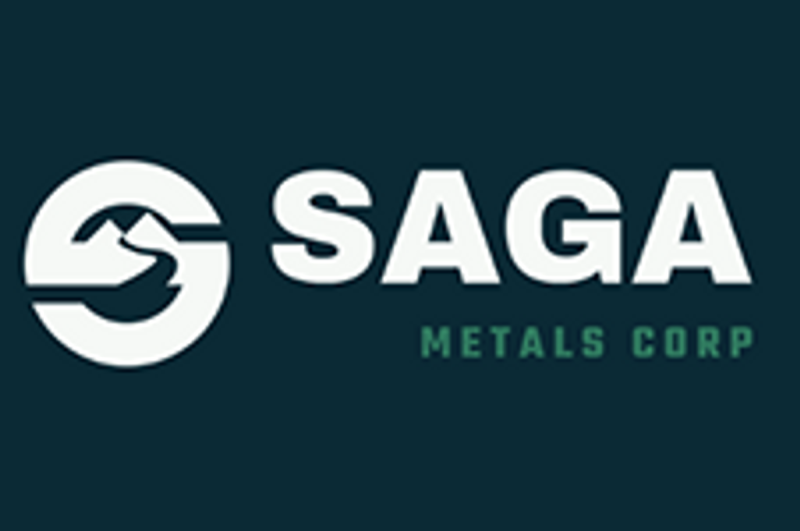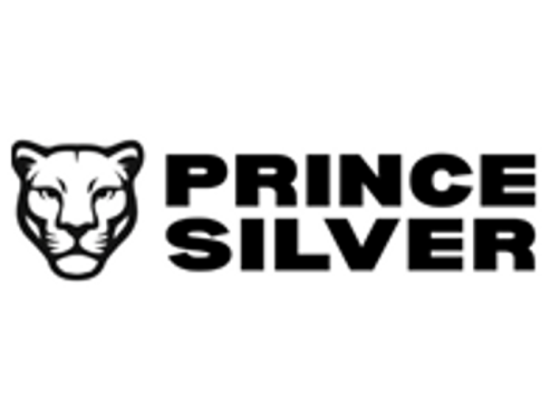Investor Insight
A diversified critical minerals exploration company driving value from a world-class titanium-vanadium-iron discovery at its Radar project in Labrador, while developing high-potential uranium and lithium assets in Canada’s top jurisdictions. A partnership with Rio Tinto (ASX:RIO,NYSE:RIO,LSE:RIO) further strengthens Saga’s position in the global green energy transition.
Overview
Saga Metals (TSXV:SAGA,OTCQB:SAGMF,FSE:20H) is a Canadian mineral exploration company with a diversified portfolio of critical minerals assets in top-tier mining jurisdictions. The company’s flagship Radar titanium-vanadium-iron project in Labrador recently delivered significant drill results setting the stage for what could become a globally significant vanadiferous titanomagnetite (VTM) opportunity.
Early drilling has confirmed thick, high-grade layers of mineralization containing titanium, vanadium and iron — three metals essential to steelmaking, aerospace, defense and new energy storage technologies. The project covers the entire Dykes River intrusion, a large mineral system on par with some of the world’s best-known titanium-vanadium operations, such as Panzhihua in China and Tellnes in Norway. Geophysical surveys and drilling suggest that only a fraction of the 20-kilometre mineralized trend has been tested so far, leaving huge upside for further growth.
While Radar is currently the primary focus, Saga also maintains exposure to uranium and lithium through the Double Mer uranium property in Labrador and the Legacy lithium JV with Rio Tinto in Quebec. This balanced portfolio positions Saga to benefit from multiple high-demand supply chains supporting the global energy transition.
Company Highlights
Globally Significant Titanium-Vanadium-Iron Project: Newly confirmed high-grade titanomagnetite discovery at Radar project with an inferred 20 km oxide layering strike within the Dykes River intrusion. Drill intercepts at Radar include up to 43 percent iron, 9.4 percent titanium dioxide (TiO₂) and 0.66 percent vanadium oxide (V₂O₅).Claims have been expanded to secure the entire titanomagnetite-bearing intrusion. Rio Tinto JV: A C$44 million option agreement with Rio Tinto Exploration Canada to advance the Legacy lithium project in James Bay, Quebec, part of North America’s newest lithium district. Double Mer Uranium Project: Drill-ready 25,600-hectare project covering an 18 km uranium-rich trend, with U₃O₈ grades up to 0.43 percent and scintillometer readings up to 27,000 cps. Diversified pipeline: Additional North Wind iron ore property in the Labrador Trough with historical grades up to 75 percent iron oxide (Fe₂O₃) in surface samples. Strong leadership with a track record across mining, exploration and capital markets.Key Projects
Radar Titanium-Vanadium-Iron Project (Flagship)
The Radar project is Saga’s current flagship asset located ~10 km from Cartwright, Labrador. With the potential to become a globally significant VTM discovery, the project covers 24,175 hectares over the Dykes River intrusion, a billion-year-old layered mafic complex comparable in scale to Greenland’s Skaergaard intrusion and analogous to globally recognized VTM systems at Panzhihua (China) and Tellnes (Norway).
Project Highlights:
2025 maiden drill program confirmed continuous titanomagnetite layers with intercepts grading up to 43 percent iron, 9.4 percent TiO₂ and 0.66 percent V₂O₅. Titanomagnetite-rich intercepts averaged 20 to 40 percent, with massive layers exceeding 60 percent. Expanded claims now secure the entire 160 sq km titanomagnetite-bearing intrusion. Geophysical work linked the oxide-rich layering over >20-km strike with magnetic high anomalies, ground-truthed by drilling and mapping. Winter 2025 drilling in the Hawkeye Zone, guided by 3D magnetic inversion and VLF-EM, intersected a 300- to 400-m thick titanomagnetite-rich sequence. The highest V₂O₅ assays correlate with these thicker bands, pointing to a major magmatic pulse. At the Trapper Zone, summer geophysics revealed a 3-km continuous anomaly with magnetic readings up to 115,500 nT, among the highest recorded, highlighting exceptional mineralization potential. Mineralogical studies confirm ilmenite inclusions within magnetite, suggesting metallurgical simplicity and potential for a combined vanadium-titanium-iron concentrate, echoing vertically integrated operations like Panzhihua. Supported by excellent infrastructure, including road access, deep-water port, hydroelectric power and an airstrip near Cartwright, Labrador. Strong community collaboration, with the Mayor of Cartwright issuing a formal letter of support, and local workers engaged in field programs. Comprehensive 2024–2025 work programs integrated geophysics, drilling, petrography, geological mapping, and infrastructure upgrades, rapidly advancing project understanding.Double Mer Uranium Project
The Double Mer uranium project is located in eastern central Labrador, 90 km northeast of Happy Valley, Goose Bay. The property lies between Lake Melville and Double Mer, both inlets off the Labrador Sea, and covers three high-priority uranium zones – Luivik, Nanuk and Katjuk – along an 18-kilometre mineralized trend.
Regional map of the Double Mer uranium project in Labrador, Canada
Project Highlights:
1,024 claims spanning 25,600 hectares in eastern Labrador, covering the Luivik, Nanuk and Katjuk zones along an 18-km uranium trend. Rock sampling returned up to 0.428 percent U₃O₈ with scintillometer readings as high as 27,000 cps. Geological parallels to Labrador’s Central Mineral Belt (CMB), home to Paladin Energy’s Michelin deposit.Legacy Lithium
The Legacy lithium property is dedicated to expanding North America’s newest lithium district in the prolific James Bay region of Quebec. The projects span over 65,849 hectares and hosts the same geological setting along strike from Rio Tinto, Winsome Resources, Azimut Exploration and Loyal Lithium in the La Grande sub-province.
Project Highlights:
Subject of a C$44.4 million JV option with Rio Tinto Exploration Canada, under which Rio Tinto acts as operator and can earn up to 75 percent. 100+ documented pegmatite outcrops with multiple prospective lithium-bearing zones for follow-up in 2025. Benefits from Quebec’s Plan du Nord infrastructure development program.North Wind
The North Wind project is located in west central Labrador, 16 km southwest of Schefferville, Quebec within the Labrador Trough.
Project Highlights:
Covers 6,375 hectares and 255 claims. Historical drilling averaged 21 percent iron across eight holes, including intercepts from the Lower Red Green Chert unit with grades up to 75 percent Fe₂O₃. 2024 fieldwork confirmed a 4-km NW-SE mineralization trend, reinforcing the project’s scale and grade potential.Management Team
Michael Stier – Chief Executive Officer and Director
Educated in business management and finance, Michael Stier has spent the past 15 years focused on and building expertise in capital markets. Experienced in corporate structure, finance, business development, IPOs, M&A and wealth management, Stier served as a CIBC IIROC licensed senior financial advisor, senior analyst for a private equity company and more recently holds executive and directorship roles with private companies and publicly listed issuers. He has consulted in industries including mining, oil & gas, fintech, VR, eSports, health, life sciences and biotech. In addition to Saga, Stier has acted for several public entities and currently sits on the board of GoldHaven Resources.
Terence Lee – Chief Financial Officer
Terence Lee is a CPA with over nine years of finance experience in reporting under International Financial Reporting Standards. Lee has worked in financial planning, analysis and reporting for companies across various industries including mining, technology, real estate, life sciences, education and private healthcare. Lee graduated with a BA from Simon Fraser University, a Diploma of Accounting from UBC’s Sauder School of Business and articled with BDO LLP. Lee is CFO of various private and publicly listed companies.
Michael Garagan – Chief Geological Officer
With a Bachelor of Science in Geology, Michael Garagan has 15 years of experience in the exploration industry with projects across the world including Africa, Asia, North and South America. He encountered a diverse experience of deposit styles from gold to base metals in porphyry, orogenic, epithermal and VMS deposits to uranium and lithium pegmatites. Notable projects include B2 Gold’s Otjikoto project in Namibia, Night Hawk’s Colomac project in NWT, Unigold’s Neita project in the Dominican Republic, as well as Hudbay’s Lalor Mine in Snowlake, Manitoba.
Michael Waldkirch – Independent Director
Michael Waldkirch is a CPA and CGA with over 25 years of professional experience. Since 1998, he has led the accounting firm of Michael Waldkirch & Company, specializing in accounting, tax and business consultancy services to a wide variety of public and private companies. He has represented a wide variety of public corporations including mining, oil and gas and technology companies listed on the TSX, TSXV, NYSE-American, NASDAQ and OTC-BB. He has served as CFO of numerous Canadian and US publicly listed companies, including Gold Standard Ventures and Barksdale Resources and is currently an independent board member of US Gold Corp. (NASDAQ:USAU).
Harrison Pokrandt – Independent Director
With 7 years of experience in mineral exploration, Harrison Pokrandt has worked on multiple styles of geology including porphyry, VMS, orogenic, Epithermal, and Carlin-style deposits throughout countries such as Canada, Nevada, Uzbekistan, Finland, Japan, and Mali. Primarily working in gold in multiple districts, Pokrandt has experience in exploration projects and mines within all stages of project development from grassroots to development projects as well as active mines. Some flagship projects he has experience with include B2Gold’s Fekola, Skeena Resources’s Eskay Creek, as well as B2Gold’s Back River Project. Pokrandt studied earth science at Carleton University and is currently employed at Scorpio Gold Corporation as VP of Exploration.

